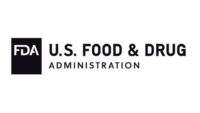Retail Sector Faces "New Era" of Food Safety Regulatory Focus

Credit: Bernard Hermant via Unsplash
Whether we grocery shop, dine out, or stop for takeout on a frequent or semi-regular basis, we all expect the food we purchase to be safe to eat. It is an expectation that the food supply chain works hard to meet, but issues do arise that cause food to be unsafe, requiring recall. While the problems often originate further upstream in the supply chain, there are plenty of cases for which contamination occurs at retail establishments—both grocery and foodservice.
Examples and data reinforce these challenges—for instance, a Utah grocery store1 was forced to shut down its meat department after Salmonella was found in ground beef samples during a routine government inspection, and an FDA report2 states that more than half of foodborne illness outbreaks that occur each year are associated with food from restaurants. Furthermore, research has found that 98 percent of intentional contamination cases occur later in the supply chain nearest to the consumer3 (e.g., at foodservice and retail establishments).
"The creation of the Food Safety Modernization Act [FSMA] clearly put the lens of food safety risk reduction on manufactures and processors and, to some extent, growers. FSMA placed the emphasis on risk-based preventive controls, and the industry has adopted that concept to different degrees," said The Acheson Group (TAG) President and CEO, Dr. David Acheson.
"However," Dr. Acheson added, "FSMA did not focus on retail and foodservice operations, even though food safety is clearly important in those sectors, too. Controlling risks at retail and foodservice establishments requires some different thinking compared with that in a manufacturing facility. The Food Code forms an excellent guidance document to control risks, but does not have the regulatory teeth of FSMA."
Such incidents, statistics, and lack of "regulatory teeth" have led to a renewed focus on retail food safety by federal and state regulators and consumer groups. In 2022 alone:
- FDA published an update to the Voluntary National Retail Food Regulatory Program Standards4
- FDA and the Centers for Disease Control and Prevention (CDC) issued a Memorandum of Understanding (MOU)5 to "advance collaborative efforts to reduce the occurrence of foodborne illness risk factors in retail and foodservice establishments"
- The PIRG Education Fund published a report6 grading top U.S. grocers on their policies to control antibiotic use in their private-label meat supplies
- FDA produced a Fact Sheet7 on its Retail Food Safety Association Collaboration agreement
- The Retail Food Safety Regulatory Association Collaborative published an assessment report8 on Active Managerial Control Incentive Programs.
While all of these efforts show the focus being placed on food safety in the end-of-chain, consumer-facing establishments of retail, there is a key component included in the regulatory publications that retail should take to heart—the inclusion of directives that promote active managerial control (AMC).
Active Managerial Control
Defined as "the purposeful incorporation of specific actions or procedures by industry management into the operation of their business to attain control over foodborne illness risk factors," AMC is not a new concept. References to its use can be found as far back as 1997, generally in relation to the application of Hazard Analysis and Critical Control Points (HACCP) principles with reference to the control of hazards or risks. In fact, FDA's Voluntary National Retail Food Regulatory Program Standards include the concept in two basic goals "on which to build a new foundation for the retail program":
- Promote AMC of the risk factors most commonly associated with foodborne illness in food establishments
- Establish a recommended framework for retail food regulatory programs within which the AMC of the risk factors can be best realized.
A key aspect of AMC is its focus on a preventive rather than reactive approach. It can be thought of as encompassing a three-phase approach:
- Food safety plan. Develop an effective plan based on the identification of the potential risks of your retail food/foodservice establishment. The plan should include practical policies that lay out a clear plan for the staff and how any food safety issues that arise will be handled. HACCP principles can provide a good basis for the plan.
- Training. The food manager is responsible for the safety of customers but often has little contact with the food, so it is important that workers be trained in food safety policies and practices. Training should be tailored to the needs of the facility and create a trusting environment to encourage employees to practice food safety.
- Ongoing verification. Regular assessment of food safety policies and employee compliance is essential to ensuring continuing food safety. Food workers have many procedures and practices to remember; following up on food safety practices not only enables retraining where needed, but can also help identify any procedures that may need modification.
Food Safety Culture
Another area to consider is the inclusion of food safety culture as one of the three primary goals of the MOU—bringing a new element to retail and foodservice that had seen little to no focus in the past. Specifically, the objective is that the FDA and CDC "promote a culture of food safety and food safety management systems within retail and foodservice establishments." Food safety culture became a key aspect of FDA's focus when the New Era of Smarter Food Safety Blueprint was published in 2020 with food safety culture as one of its four core elements. Not only was the focus on promotion throughout the food system, from farms to homes, but food safety culture was stated to be a "prerequisite to effective food safety management."
Food safety culture is a behavior-based system requiring commitment from the top down, and it makes AMC that much more effective. The goal of food safety culture is to provide staff with a common sense of food safety purpose through the development of behaviors and habits focused on risk awareness and management using a variety of tools, consequences, and positive reinforcement and incentives. It is the process of integrating food safety into everything that is done, so that it simply becomes "the way we do things around here."
As FDA stated in its New Era Blueprint, "We will not make dramatic improvements in reducing the burden of foodborne disease without doing more to influence and change human behavior, addressing how employees think about food safety and how they demonstrate a commitment to this goal in how they do their job."
Retail Outbreaks
Retail was also specifically called out in FDA's September 2022 Foodborne Outbreak Response Improvement Plan (FORIP) publication,9 where it was stated that "many foodborne outbreaks occur at the local level and are tied to contamination that occurs in retail settings." With the added goals of tackling foodborne outbreaks faster and finding the root cause, FDA appears to be putting a spotlight on food safety in retail settings.
A complicating factor is the continuing labor shortage that leaves many retail settings with less knowledgeable employees or temporary workers and makes the building of a food safety culture more difficult. Supply shortages and higher prices are also at issue, with retailers left to quickly source and assess new suppliers when regular sources fall through or outprice the market. However, neither FDA nor a state inspector will view any of these challenges as valid excuses for a lapse in food safety.
"The retail and foodservice sector is clearly a source of ongoing foodborne illness," Dr. Acheson said. "And with the food safety standards varying greatly between establishments—with some having superlative food safety programs, and others not so much—this has become a focus for new regulatory strategy." So, what does this bode for the future? "We should anticipate further changes in requirements and regulatory oversight," Dr. Acheson advised.
- Russell, Stefene. "Salmonella found in ground beef at a Midvale market." The Salt Lake Tribune. April 12, 2022. https://www.sltrib.com/artsliving/food/2022/04/12/salmonella-found-ground/.
- U.S. Food and Drug Administration (FDA). "Technical Report: FDA Report on the Occurrence of Foodborne Illness Risk Factors in Fast Food and Full-Service Restaurants, 2013–2014." April 12, 2018. https://www.fda.gov/media/117509/download.
- Lieb, Benjamin and Jason Bashura. "Looking Back to Look Ahead to Protect the Food Supply." Domestic Preparedness. October 12, 2022. https://www.domesticpreparedness.com/preparedness/looking-back-to-look-ahead-to-protect-the-food-supply/.
- FDA. "Voluntary National Retail Food Regulatory Program Standards." February 23, 2023. https://www.fda.gov/food/retail-food-protection/voluntary-national-retail-food-regulatory-program-standards.
- CDC and FDA. "MOU 225-22-027: Memorandum of Understanding between the U.S. Department of Health and Human Services Centers for Disease Control and Prevention's National Center for Environmental Health and the Food and Drug Administration." September 30, 2022. https://www.fda.gov/about-fda/domestic-mous/mou-225-22-027.
- U.S. PIRG. "Superbugs in Stock: Which Grocery Chains and Acting to Eliminate Routine Antibiotic Use in their Meat Supply?" October 2022. https://publicinterestnetwork.org/wp-content/uploads/2022/10/SuperbugsinStock_10-13_sm.pdf.
- FDA. "Retail Food Safety Association Collaboration Cooperative Agreement Program." February 14, 2023. https://www.fda.gov/federal-state-local-tribal-and-territorial-officials/grants-and-cooperative-agreements/retail-food-safety-association-collaboration-cooperative-agreement-program.
- Retail Food Safety Regulatory Association Collaborative. "Active Managerial Control Incentive Programs Assessment Report." December 27, 2022. https://www.retailfoodsafetycollaborative.org/tools/active-managerial-control-incentive-programs-assessment-report/.
- FDA. "New Era of Smarter Food Safety: FDA’s Foodborne Outbreak Response Improvement Plan." September 26, 2022. https://www.fda.gov/food/new-era-smarter-food-safety/new-era-smarter-food-safety-fdas-foodborne-outbreak-response-improvement-plan.
Looking for a reprint of this article?
From high-res PDFs to custom plaques, order your copy today!





